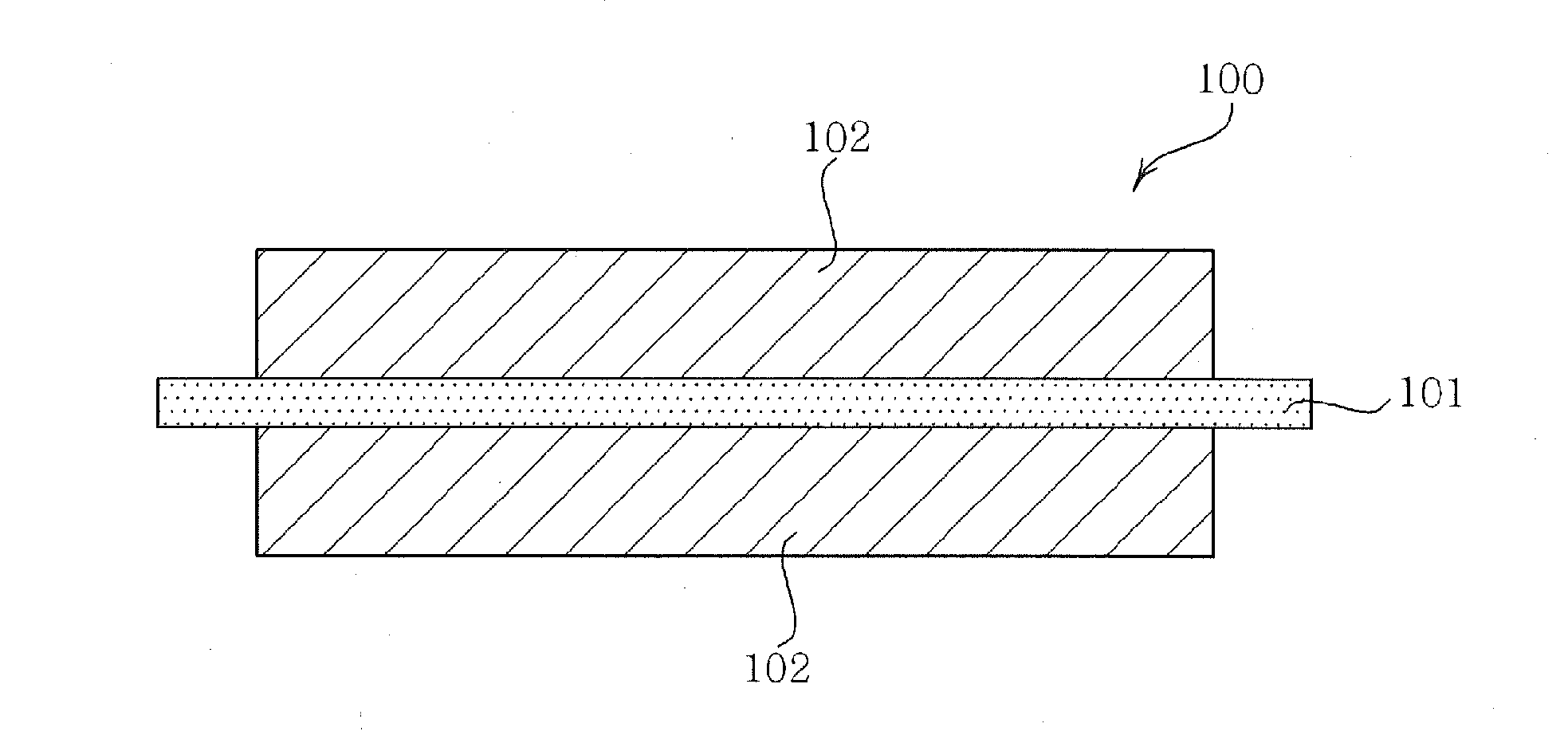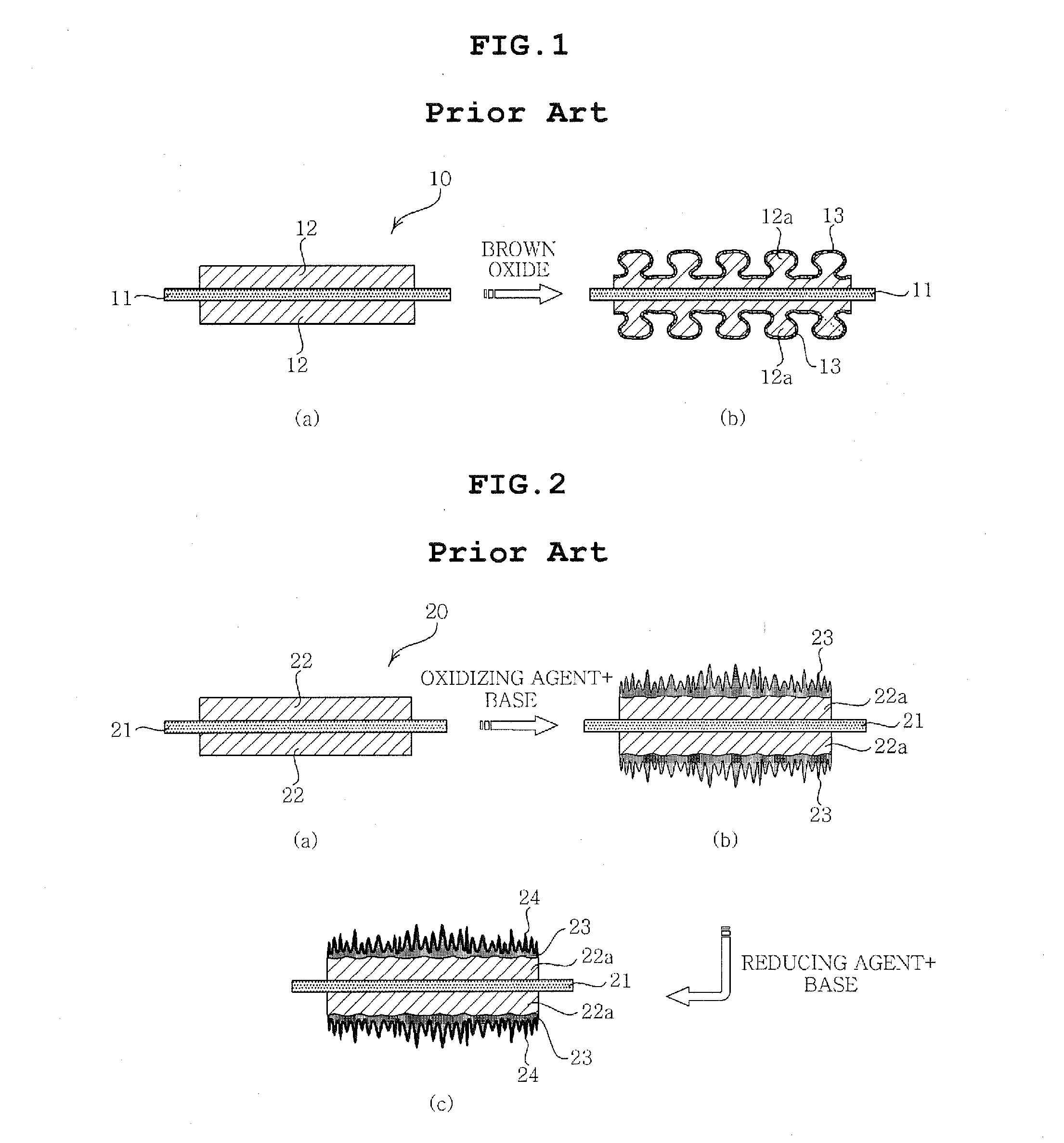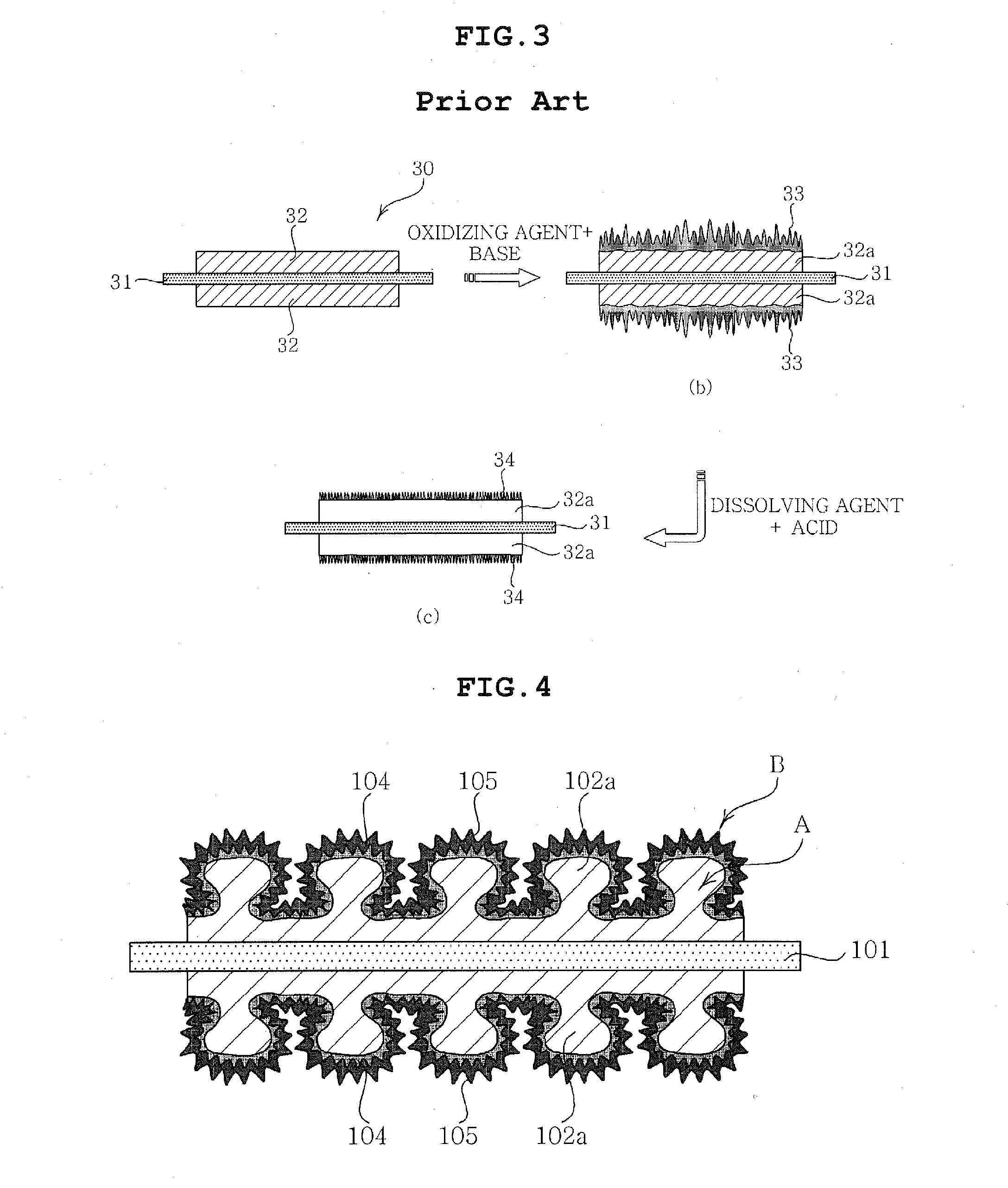Printed circuit board and method for manufacturing the same
a printed circuit board and manufacturing method technology, applied in the direction of printed circuit manufacturing, printed circuit aspects, metallic pattern materials, etc., can solve the problems of interlayer adhesion and appearance of the final product, the peel strength of the black oxide treatment method is about 0.2 kgf/cm, and the peel strength is not suitable for a high reliability product requiring a peel strength of at least 0.4 kgf. , to achieve the effect of improving the interlayer adhesion of the pcb
- Summary
- Abstract
- Description
- Claims
- Application Information
AI Technical Summary
Benefits of technology
Problems solved by technology
Method used
Image
Examples
example 1
[0147]According to a process sequence illustrated in FIG. 6, surface treatment of a circuit metal for a PCB was performed.
[0148]A degreasing process was conducted by treating a test specimen made of a copper clad laminate (CCL; 406 mm×510 mm, 0.1 mm in thickness) and a copper foil (330 mm×400 mm, 35 μm in thickness) using a solution of 20 wt. % MC100 (KENSCO Co., a basic cleaner) in deionized water at 60° C. for 1 minute and then washing the same.
[0149]After the degreasing process, an etching process was conducted by treating the test substrate, that is, the specimen (made of CCL and Cu foil) in an etching solution comprising 12 wt. % of sodium persulfate, 5 wt. % of sulfuric acid and 15 wt. % of BF200A (KENSCO Co., a roughness forming etchant) and the remainder of deionized water at room temperature for 1 minutes and then washing the same.
[0150]After the etching process, a pre-dipping process was conducted by treating the etched specimen using a solution of 30 wt. % BF300A (KENSCO ...
example 2
[0153]The present experiment was substantially performed according to the same procedures as described in Example 1, except that the post-dipping solution used herein was a dissolving solution comprising 40 wt. % of HR400A (KENSCO Co., a dissolving agent) and 10 wt. % of HR400B (KENSCO Co., a dissolving agent) in deionized water and the post-dipping process was conducted at 45° C. for 1 minute.
[0154]The black oxide layer of the specimen prepared according to the foregoing example had an average film thickness of 0.1 to 0.6 mg / cm2.
experimental example
[0156]For assessment of reliability, a CCL specimen (406 mm×510 mm) with a predetermined thickness was firstly prepared, and weighed before and after formation of a black oxide layer thereon. Then, a difference in measured weights of the specimen was calculated to estimate a thickness of the black oxide layer. Alternatively, for determination of an etching rate, the CCL specimen (100 mm×100 mm) was cut into pieces having a predetermined size and each cut piece was weighed before and after the etching process. Then, a difference in measured weights of the specimen was calculated to determine the etching rate. For the inventive example, the thickness of the black oxide layer was constantly maintained in the range from 0.8 to 1.2 μm. Furthermore, interlayer adhesion between the Cu foil and resin was assessed by the following procedures. According to assessment items and procedures listed in Table 1, a prepreg (BT resin, GHPL-830, Tg=215° C.) and the treated Cu foil specimen (300 mm×400...
PUM
 Login to View More
Login to View More Abstract
Description
Claims
Application Information
 Login to View More
Login to View More - R&D Engineer
- R&D Manager
- IP Professional
- Industry Leading Data Capabilities
- Powerful AI technology
- Patent DNA Extraction
Browse by: Latest US Patents, China's latest patents, Technical Efficacy Thesaurus, Application Domain, Technology Topic, Popular Technical Reports.
© 2024 PatSnap. All rights reserved.Legal|Privacy policy|Modern Slavery Act Transparency Statement|Sitemap|About US| Contact US: help@patsnap.com










